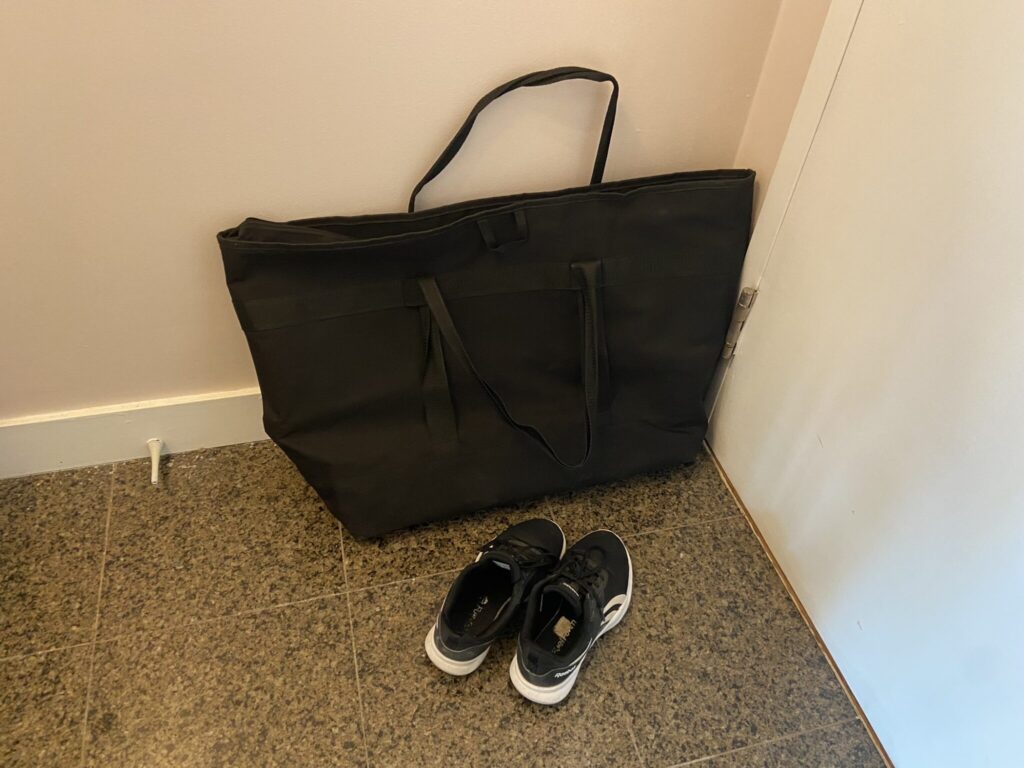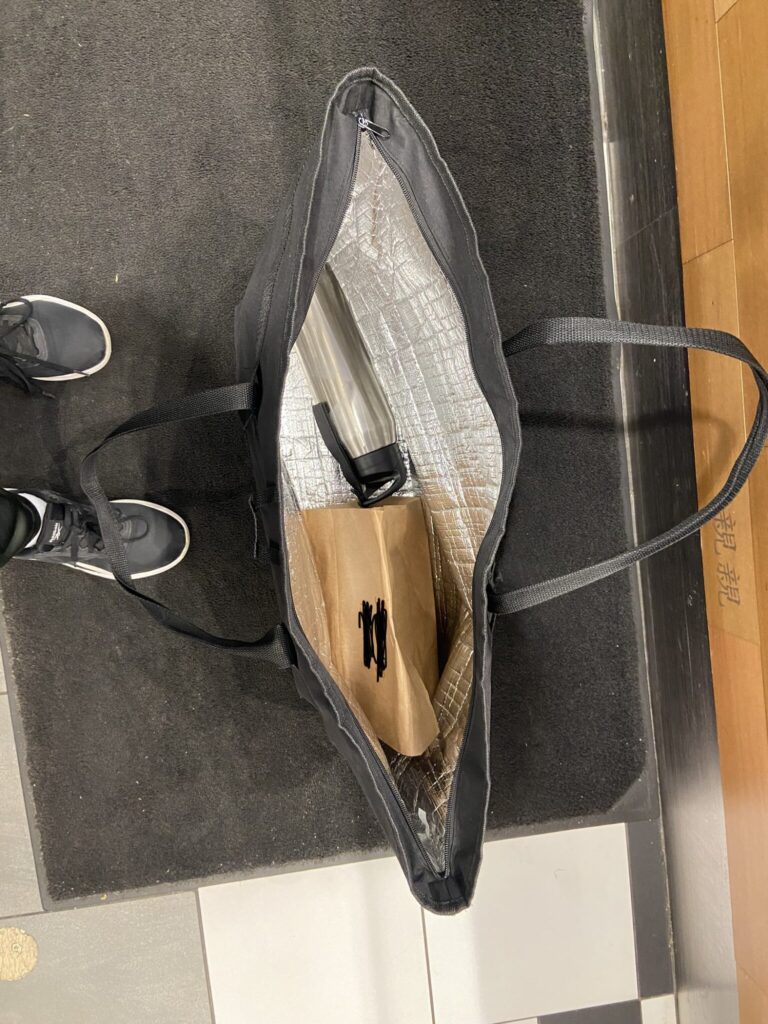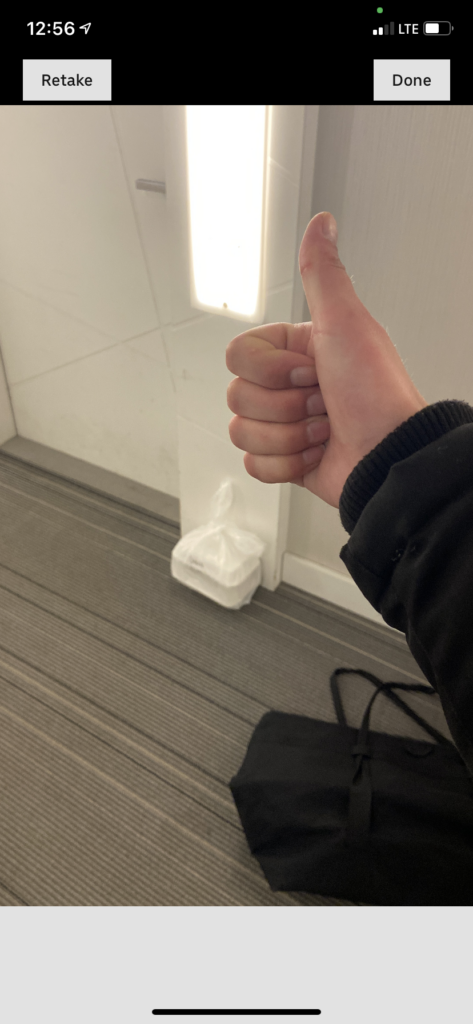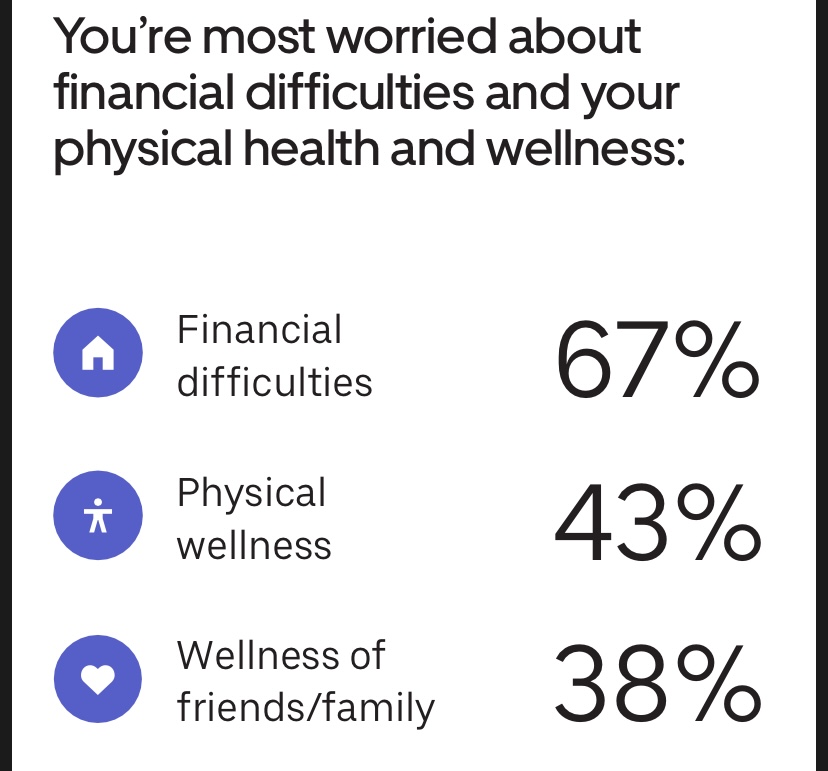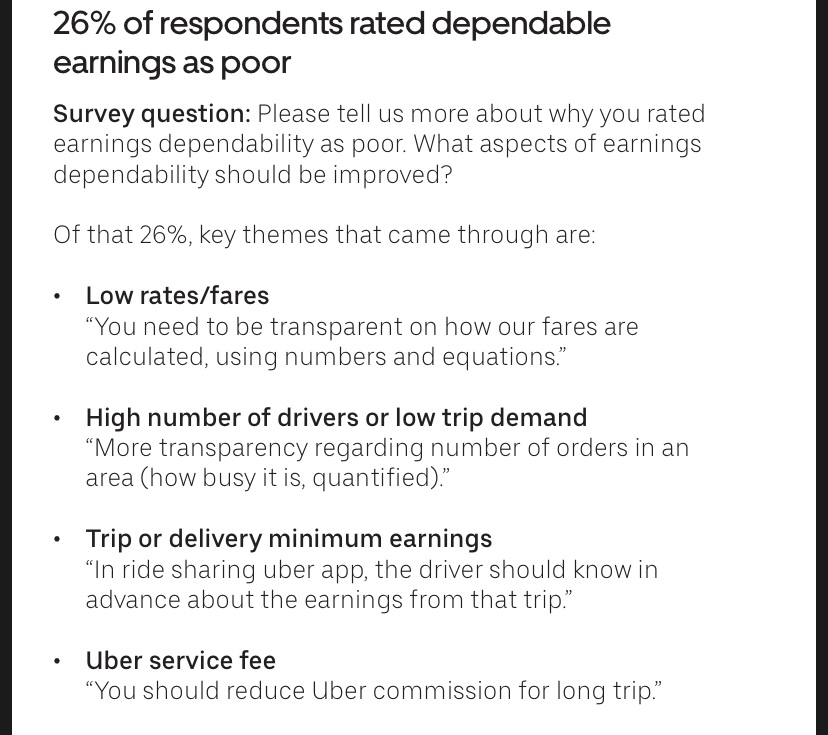By Jenna Winger
The early January air turned all exposed skin red, fingers numb and difficult to move. I lost my right mitten the night before, the temperature is minus 20 with the windchill. I continue to push my way through the wind and blizzarding snow; trying to keep my insulated tote bag steady at my side and not blowing behind me like a parachute. My boots have been soaked through. I’m completely miserable, but absolutely have to make these final few dollars to reach my weekly goal.
I finally arrived at the Swiss Chalet on Queens Quay West to a full lobby and I’m unable to get to an available employee. I’m frustrated knowing it will be a wait but at least I’ll start warming up. After about 10 minutes I am able to show a worker the order number and get the two bags of food for the delivery. I lift the weighted bag to my sore shoulder. Back into the storm I go.
With my bag now weighed down it was much easier to fight the wind, but I am still holding the bag steadily to ensure no intense movement will disrupt the restaurant’s packaging. If anything were to happen, even by accident, it could be devastating; customer complaints, loss of a tip and potential repercussions including suspension of account are all things I worry about. Since the quality of my delivery could be the difference between no tip and a $5+ tip so I try hard to be fast, efficient, kind and deliver as per the instructions given by the customer. I keep on trekking through the snow and wind to get to the address.
This is the reality for me and many other people across Toronto who are trying to make ends meet using readily available delivery apps. Couriers are faced with inclement weather, taxing physical effects for walkers and bikers and busy restaurants with long wait times. All while being exposed to many different employees and customers creating higher risk of contracting COVID-19, and being paid as little as $3 per delivery.
In June 2020, Uber Eats implemented a system amid the COVID-19 pandemic. This system lowered base fares but started including a trip supplement to account for wait times at restaurants or distance travelled. Uber also started implementing higher boosts which adds extra to courier earnings if they deliver in an area with a surge indicated on the in app map. The surges are only for certain in demand areas and fluctuate during the day, so the boosts only supplement some of the pay lost to the new system some of the time. Couriers are now more reliant on tips than ever before, left hoping that genuine human kindness can help pay the bills. Many couriers are frustrated by this.
As a second year university student living in Toronto during COVID-19 I’ve had to manage school remotely and have struggled to find steady work. I’ve been managing food delivery to help pay my phone bill and buy groceries. Some days it’s hard to make enough money to justify going out to deliver; a sentiment shared by other couriers across social media.
“We UberEats drivers get pay cuts constantly, and now we pretty much live on tips. How can someone afford to pay $250 for brunch but only tip $1.00?” said the Reddit user u/supamova in regards to a trip that took approximately 15 minutes, excluding time to the restaurant in Toronto on March 27, frustrated with the reliance on customers tipping to provide couriers with a passable wage.
“Uber Eats is committed to transparency in pricing: before a delivery person accepts a trip, they are able to see the expected earnings for each trip. And, as always, 100% of tips go directly into their accounts,” the company said in an email to the Canadian Press.
“Not even making minimum wage and I’m taking so much risk and putting out so much effort,” said Reddit user u/Goofyal57, claiming they feel scammed as a courier.
I finally arrived at the address. It’s a highrise apartment building. “Meet at door” are the sole instructions given. I message the customer in the app to let them know I’m here. I wait about five minutes with no reply. Annoying, but understandable, so I try to call the phone number on the customer’s account, twice, in an attempt to get their attention. Still no reply.
Frustrated, and now having wasted almost 10 minutes waiting in the lobby, I ask the security if they have a drop-off area to the food. He says I can leave it on the fold out table in front of the elevators. Perfect, I leave the bags and message the customer where they are in the lobby. Relieved and ready to head home to get warm socks on, I exit the apartment building and make my way back to my own building.
As soon as I am a block away from the apartment my phone starts ringing, it’s an unfamiliar number so I decline; immediately the same number texts me.
“Please call this number,” it read.
“Who is this?” I text back.
“I ordered food and it wasn’t delivered!! I think you delivered to the wrong condo,” the next text read.
I confirmed the address and explained to them that I had attempted to contact them with no reply and that security had told me to leave it.
“Every other delivery person manages to deliver to the door like a normal human being,” the text said.
I froze in my tracks. I got no tip for walking 10 minutes to the restaurant, waiting 10 minutes to pick up the food, walking about 15 minutes from the restaurant to the building and waiting 10 more minutes while holding a heavy $60 bag of Swiss Chalet. I tried to send a message explaining but they had blocked me already. I received a bad rating, bringing my freshly 100% rating down to 99%.
Soaking wet, freezing and now even more miserable than I was before I just wish I hadn’t taken this order. The $4.50 was not worth the almost hour of work in the snow and waiting at the restaurant and the apartment complex.
“In times like this I’m out risking myself for $3. I’m trying to deliver food to people so they can stay safe, you would think at very least they’d remember we couriers are people too. A little thanks goes a really long way for us in these difficult times,” said an anonymous Uber courier from Toronto.

